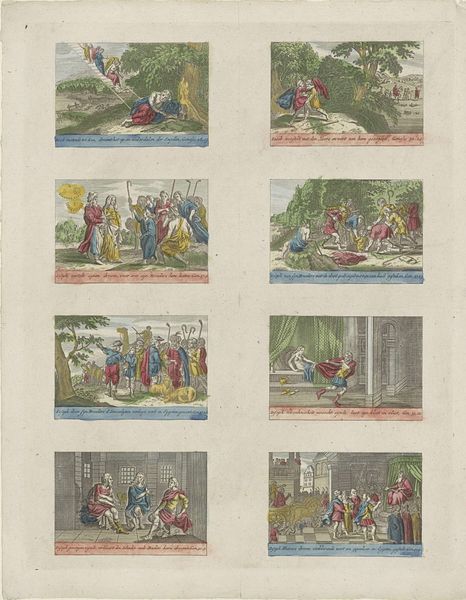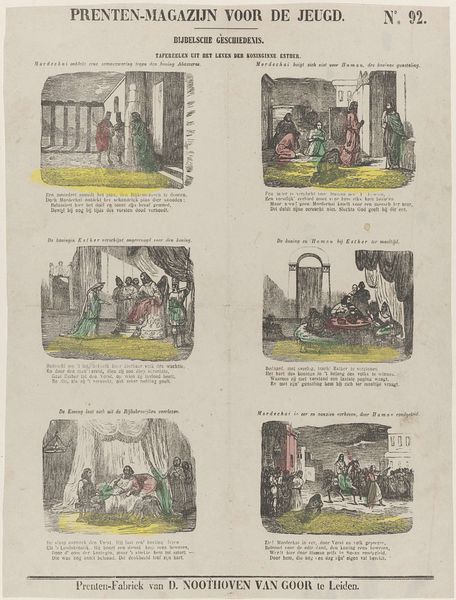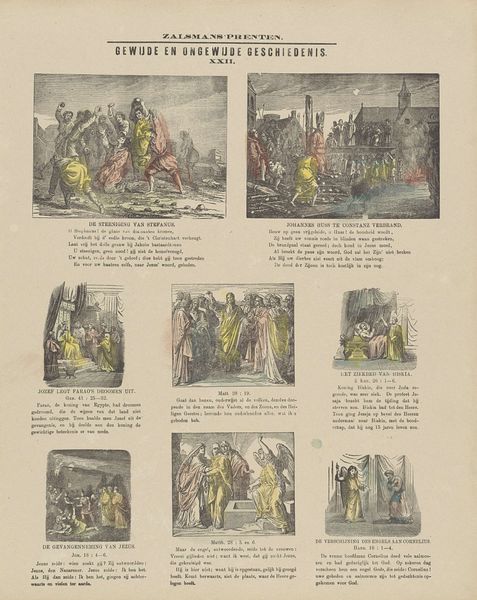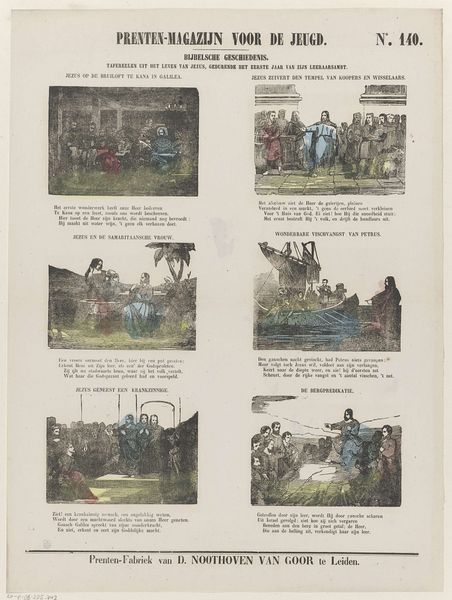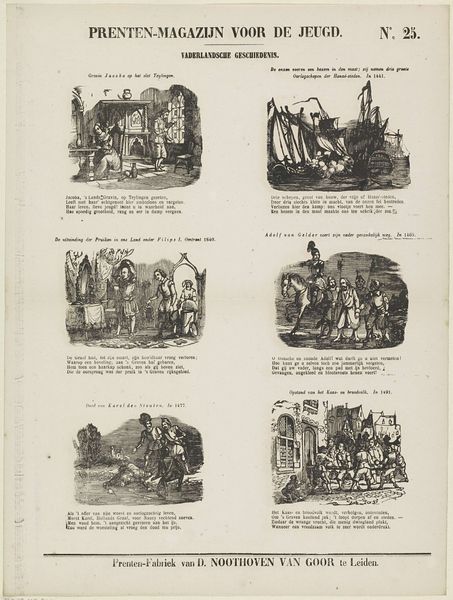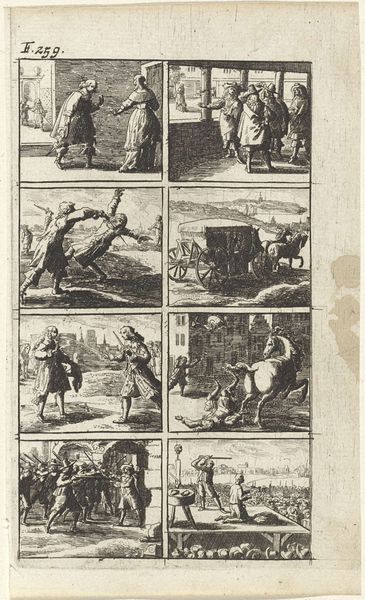
print, etching, engraving
#
dutch-golden-age
# print
#
etching
#
genre-painting
#
engraving
#
sea
Dimensions: height 420 mm, width 327 mm, height 351 mm, width 245 mm
Copyright: Rijks Museum: Open Domain
Claes Jansz. Visscher created this print, "Sea and Land Life," using etching and engraving techniques, sometime before 1652. These were the reproductive technologies of the time. The matrix was a copper plate, into which lines were cut, with acid doing some of the work. Look closely, and you can see how the crispness of the engraved lines defines the forms, and also how the overlaid color adds another layer of information. Visscher would have relied on a workshop to produce these prints efficiently, indicative of the era's burgeoning commercial networks. The scenes show a range of economic activities, from shipbuilding and fishing to cloth production and agriculture. Each little vignette encapsulates a part of the Dutch Golden Age economy. The material act of printing—making multiples that could be widely circulated—mirrors the broader social changes underway, and in particular the rise of a mercantile economy. The detailed scenes and their efficient reproduction speak volumes about labor, production, and the circulation of goods in 17th-century Netherlands. The print embodies the economic and social life of the time.
Comments
No comments
Be the first to comment and join the conversation on the ultimate creative platform.


